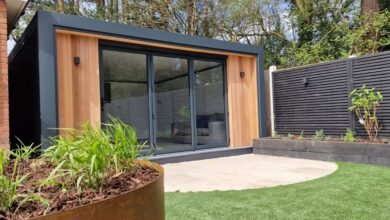How Long Does Rendering Take?

What is Rendering and Why Does Timing Matter?
Rendering is the process of applying a protective and decorative coating to walls, improving durability, weather resistance, and appearance. Whether you’re renovating a home or working on a new construction project, knowing how long rendering takes can help you plan accordingly. Several factors affect the timeframe, from the type of render used to weather conditions and project size.
Factors Affecting Rendering Time
Surface Size & Complexity
The size and complexity of the surface being rendered significantly impact how long the process takes. A simple, flat wall will be completed much faster than a detailed facade with multiple angles, edges, and architectural features that require careful application.
See also: Empower Yourself with Effective Self Regulation Training Techniques
Type of Rendering Material Used
Different rendering materials have different drying and curing times:
- Cement rendering – Can take longer as it requires multiple coats and drying between applications.
- Acrylic rendering – Dries faster and offers greater flexibility, reducing the likelihood of cracking.
- Polymer and textured finishes – May have varying drying times based on the specific product and environmental conditions.
Weather Conditions
Weather plays a crucial role in rendering projects. Wet, humid, or extremely hot conditions can delay drying times and affect the overall finish. For best results, rendering is typically done in mild, dry conditions.
Surface Preparation Requirements
Before applying render, surfaces must be cleaned, repaired, and sometimes primed. If existing walls have cracks, old paint, or moisture issues, additional preparation time will be required.
Number of Coats & Finishing Options
Some rendering styles, particularly those requiring smooth finishes or coloured coatings, need multiple layers and extra drying time between applications.
Labour & Workforce Availability
The number of workers on the project can affect completion time. A larger team can finish faster, whereas a smaller crew may take longer, especially on large-scale jobs.
Typical Timeframes for Rendering Projects
The duration of a rendering project varies based on the scale of work and complexity:
- Small Residential Projects (e.g., Single Walls or Feature Areas) – 1-3 days.
- Full House Rendering (Single-Storey Home) – 3-7 days, depending on surface prep and drying time.
- Larger Homes or Multi-Storey Buildings – 1-2 weeks, considering scaffolding and extra application time.
- Commercial & Large-Scale Rendering Jobs – Several weeks to months, depending on the scope and weather conditions.
For accurate estimates and efficient project completion, consult a renderer with experience in handling various rendering materials and project sizes. Try searching for “renderer near me”
Drying & Curing Time
Once the render is applied, it needs time to dry and cure properly. The initial drying phase usually takes 24-48 hours, but full curing can take up to 4-6 weeks. It’s important to allow adequate curing time before painting or sealing the rendered surface to ensure a strong and long-lasting finish.
How to Speed Up the Rendering Process
If you’re looking to complete your rendering project quickly, consider these tips:
- Choose fast-drying materials – Acrylic render dries faster than traditional cement render.
- Work in optimal weather conditions – Avoid extreme heat, rain, or high humidity.
- Hire experienced professionals – Skilled renderers work efficiently while ensuring quality.
- Ensure proper surface preparation – A clean, well-prepped wall reduces delays and improves adhesion.
Common Delays and How to Avoid Them
Several factors can slow down a rendering project:
- Unpredictable weather – Rain and humidity can extend drying times.
- Poor surface preparation – Issues like moisture, dirt, or cracks require additional work before rendering can begin.
- Labour shortages or scheduling conflicts – Hiring a reliable rendering team ensures the project stays on track.
Key Takeaways
The time required for rendering depends on various factors, including material type, surface preparation, and weather conditions. While small projects may take only a few days, larger homes or commercial buildings can take weeks. To get the best results, work with a professional renderer who understands your needs and can provide accurate time estimates.





